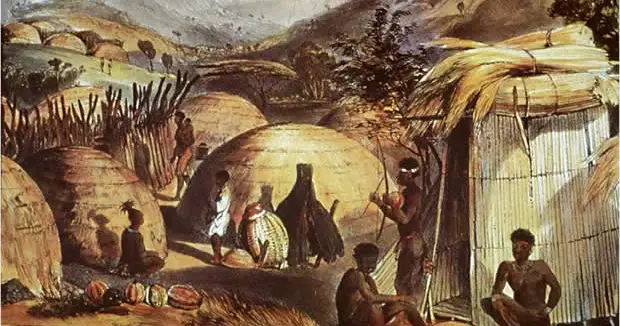The Bantus were mainly agriculturalists, which they did for their economic development and subsistence.
One of the major crops that were cultivated across various Bantu groups was millet.
The crop nearly characterized the Bantu people from the other groups on the continent as it was common with them despite where they migrated to—they would cultivate it for food and for barter trading (Russell et al., 2014).
Bantu people are made up of about 600 ethnic groups spread across 24 countries around Central, East, and Southern Africa regions.
Millet is a starch that is derived from small gained cereal crops.
It is adaptable to various soil conditions and climatic changes and served the Bantus right as they migrated across Africa.
Millet can survive in conditions where there is as little rain as 10 inches per annum.
Neumann et al., (2012) acknowledge that while there were other crops that the Bantu grew, pearl millet was the predominant one.
The other supplementary crops that the Bantu grew included fonio or Digitaria sp., and cowpea or Vigna unguiculata, and they later adopted other crops such as bananas, yams, and maize as they migrated across the African continent.
There have been contentions about the originality of the millet that became the major crop for the Bantu people.
Otherwise referred to by scholars as pearl millet or Pennisetum glaucum, its names have kept changing from one cereal to another in most Bantu languages (Russell et al., 2014).
Kahlheber et al., (2009) further notes that a term that designates pearl millet in a particular region or language may be in reference to another cereal in another region or area.
Essentially, the Bantu pearl Millet is normally related to two other indigenous African cereals, which include finger Millet or Eleusine caracana and sorghum or Sorghum bicolor, including frequently introduced foreign cereals, maize or Zea mays.
This makes it increasingly difficult to establish the particular name that originally referred to the millet by Bantus since the early European sources have failed to delineate between species.
Some of the food that the Bantu commonly used to make using millet includes gruel or porridge, which was made from millet flour that was cooked into thick porridge, which was mixed with milk or water and was consumed as a main meal or at breakfast.
They also used millet to cook flatbread, which was consumed alongside other vegetables or dishes (Koile et al., 2022).
The millet grains were also ground roughly and steamed until they become fluffy, thereby producing a light couscous texture, and were thereby mixed with meat or vegetables, or alternatively served as a side dish (Neumann et al., 2012).
Besides, the millet was soaked in water, and then it was ground and fermented to produce local brews that were imbibed for leisure by the elders or during occasions such as weddings or funerals.
They traded the remaining millet that they did not consume in exchange for other crops, cattle, pottery, craft, tools, and weapons from other communities and, therefore, it became a currency for some Bantu communities (Luna, 2016).
You may also want to check: The Origin of Semites in Kenya Explained
Sources
Kahlheber, S., Bostoen, K., & Neumann, K. (2009). Early Plant Cultivation in the Central African Rain Forest: First Millennium BC Pearl Millet from South Cameroon. Journal of African Archaeology, 7, 253–272. https://doi.org/10.3213/1612-1651-10142
Koile, E., Greenhill, S. J., Blasi, D. E., Bouckaert, R., & Gray, R. D. (2022). Phylogeographic analysis of the Bantu language expansion supports a rainforest route. Proceedings of the National Academy of Sciences of the United States of America, 119(32), e2112853119. https://doi.org/10.1073/pnas.2112853119
Luna, K. M. de. (2016). Collecting Food, Cultivating People—Google Books. Yale University Press.
Neumann, K., Bostoen, K., Höhn, A., Kahlheber, S., Ngomanda, A., & Tchiengué, B. (2012). First farmers in the Central African rainforest: A view from southern Cameroon. Quaternary International, 249, 53–62. https://doi.org/10.1016/j.quaint.2011.03.024
Russell, T., Silva, F., & Steele, J. (2014). Modelling the Spread of Farming in the Bantu-Speaking Regions of Africa: An Archaeology-Based Phylogeography. PLoS ONE, 9(1), e87854. https://doi.org/10.1371/journal.pone.0087854

